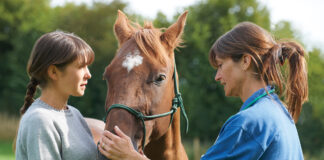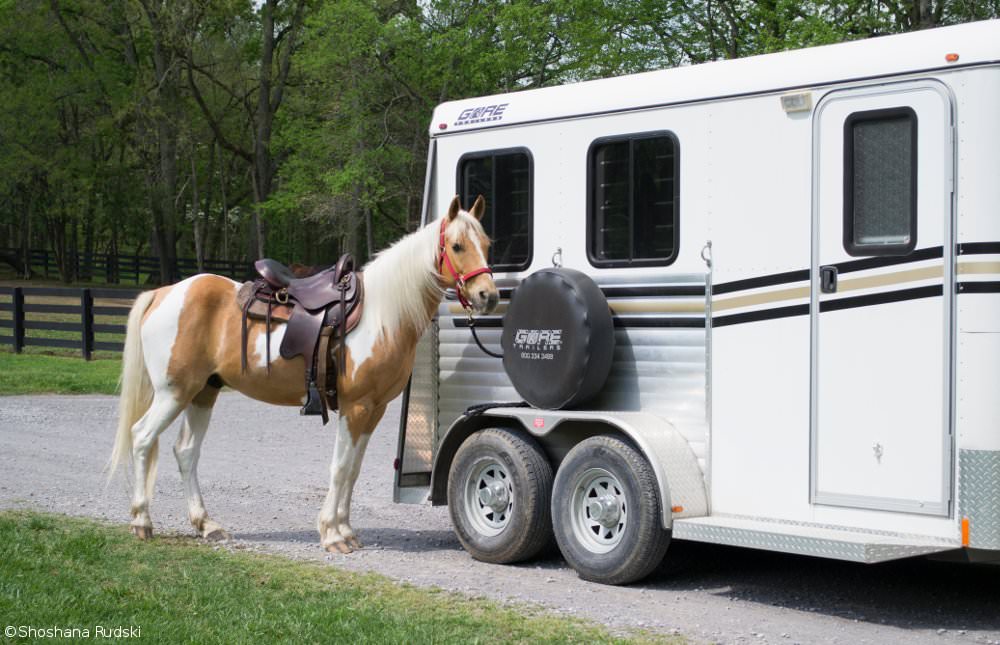
It’s hard to be inspired to put in the extra effort when you know your horse won’t easily get on the trailer. Don’t worry! He just needs a new perspective. Positive experiences will transform your horse into a willing and happy traveler. Here are three ways to teach your horse to load; decide which will suit him best.
Leading In
Leading your horse onto the trailer is an obvious choice because it’s something he already knows. Use this method only if it’s safe to be inside the trailer with him, there is an escape door, or it’s a stock or slant load.
Before you begin, your horse should know how step forward when you turn and walk away or apply light pressure on the lead. He should also walk alongside you on a loose lead and back up straight in response to a gentle cue.
At first, your troubled loader may hit the brakes when you approach the trailer. No problem. Slowly slide your hand down the lead toward the clip and apply subtle yet clear pressure.
Wait patiently for your horse to release the pressure on his own. He may do this by shifting his weight forward, releasing tension/lowering his neck, or taking a step. Reward him for any movement that shows he’s thinking about moving toward the trailer.
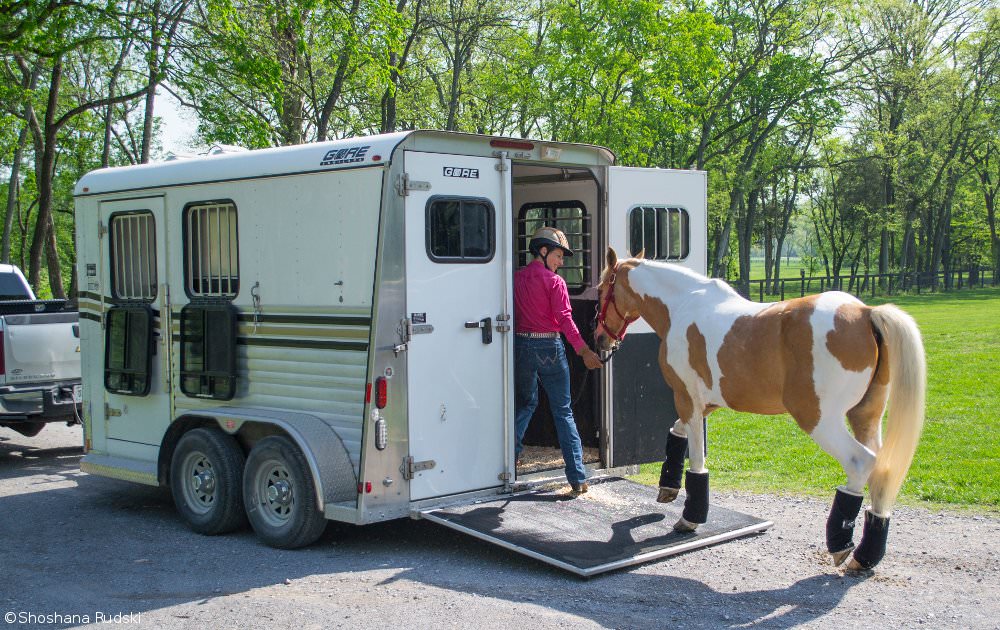
If several seconds elapse without any response, maintain steady contact and gently pulse your fingers in the rhythm of a heartbeat to ask him to come forward. This technique enables you to communicate clearly while minimizing stress.
Ask for one step at a time and reward each one generously. If your horse refuses to come forward, increase the pressure. If he scoots backward, calmly move with him while maintaining the pressure and the pulse.
Release the pressure only after he’s stopped and stepped forward. At times, you may find yourself far from the trailer as your horse establishes a distance where he feels more comfortable. This is a natural part of the process as your horse rebuilds trust.
However, growing agitation or reactive behaviors are signs he is in emotional distress, which deepens his negative association with trailer loading.
Help your horse have a positive experience and learn that trailer loading is nothing to fear by breaking the process down into smaller simpler doable steps, ignoring his mistakes, and generously celebrating his successes.
Target Training
Target training has several advantages when it comes to trailer loading. If it’s something your horse isn’t familiar with, he won’t have a negative association with it. That gives him a fresh perspective and a better chance for success. Your horse will find it appealing because it is reward-based.
Start by making a target; a length of plastic garden stake with a piece of pool noodle slipped over the end works great. Hold it near your horse’s nose. When he touches it, make a unique sound he won’t confuse for a spoken word or other verbal cue (a clicker works, or a sound like “boop!”), then give him a small amount of feed or carrot. The sound marks the behavior you want your horse to repeat and the food reinforces the behavior.
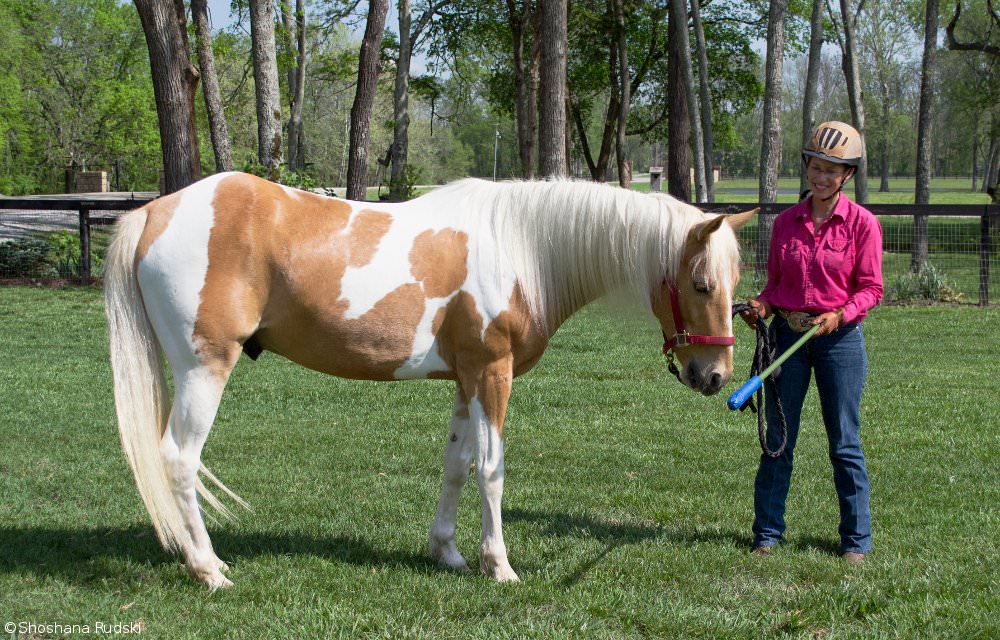
Once that is going well, start moving the target slightly left, right, or down. Eventually, you can move it far enough to encourage him to take one step, then two, et cetera. Over time, you can try it at the trailer, or if your horse is apprehensive about being near the trailer, introduce him to obstacles that simulate trailer loading to build his confidence. Baby steps add up and bring your horse closer to the ultimate goal: following the target into the trailer.
Start with the lowest degree of difficulty, then increase the challenge slowly. For example, stepping from rubber mat to a sheet of plywood. Next, create narrow corridors to target your horse through, such as a row of cones, then low poles, raised poles, then barrels. Anytime he’s apprehensive about a new challenge, return to something easier.
You can also “click” to mark, then reward him for showing any interest or even a glance in the direction of whatever it is that makes him nervous.
Driving to Load
Drive your horse on board when your trailer has no escape door or it isn’t safe to be inside with him. The goal is to load your horse using a long line to keep his head in alignment with the trailer while encouraging him forward using pressure at his hindquarters.
The line should slide easily over a door, window, or tie ring without catching or fraying. It needs to be long enough to reach from behind the trailer, through the stall space your horse will occupy, and back to you.
There are a few cons to this method. First, the rope or halter could get caught on something. Always use a breakaway halter. Also, your horse could get confused by having you standing next to him and driving him; this could result in kicking or bolting.
Ask your horse to step forward with a wave of your hand, or a light touch or tap on his rump with a whip. The moment he offers any forward movement, even a slight lean in the right direction, stop all pressure and reward his efforts.
If at any point your horse wants to back away from the trailer or come out after he’s stepped in, let him. Allowing him to exit is reassuring and confidence building. Once he feels secure, he will step up more readily, move to the front, and stand quietly inside.
Teaching your horse to load on a trailer confidently at home will save time and stress when you are ready to head out on the trails or to a show. A little preparation now will pay off in the long run!
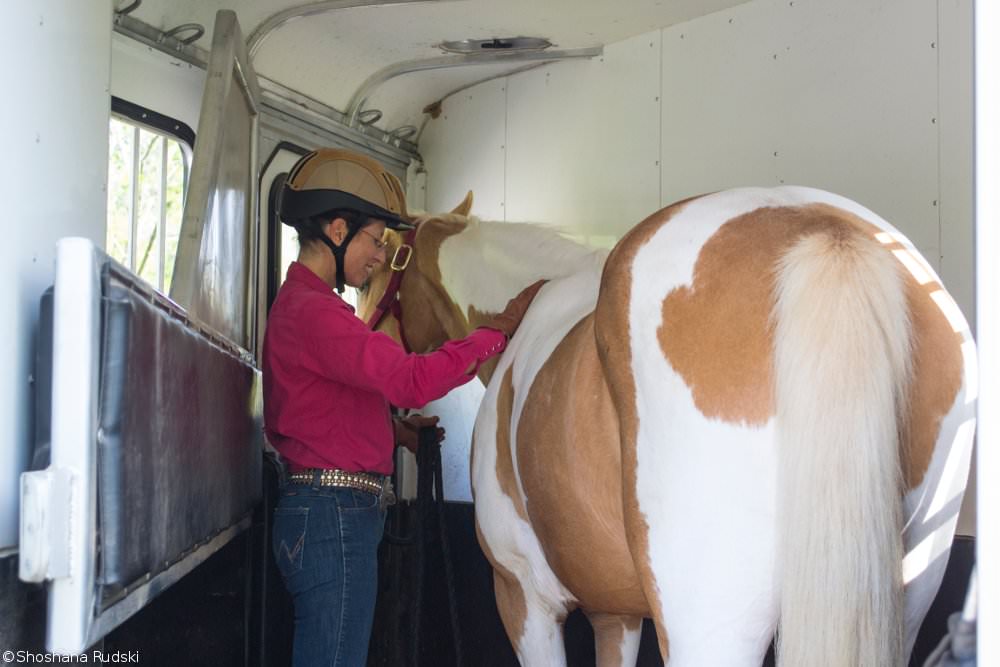
Are You Ready to Roll?
Now that your horse is ready to hit the road, prepare your trailer for a safe and successful trip.
- Check tires for cracking and wear.
- Have bearings repacked yearly.
- Inspect floors at the beginning of every season.
- Test doors and latches for proper function.
- Test electrical.
- Grease the hitch.
- Check your spare tire.
- Bring tire chocks, a drive-on jack stand, and hazard triangles.
- Pack emergency supplies: buckets, extra halter and lead, long line, knife, flashlight, and first-aid kit.
Read on for more tips for trailer training success >>
DALE RUDIN is a CHA-certified riding instructor and clinician with a mindful and balanced approach to horsemanship and riding. www.un-naturalhorsemanship.com
This article originally appeared in the July 2017 issue of Horse Illustrated magazine. Click here to subscribe!




